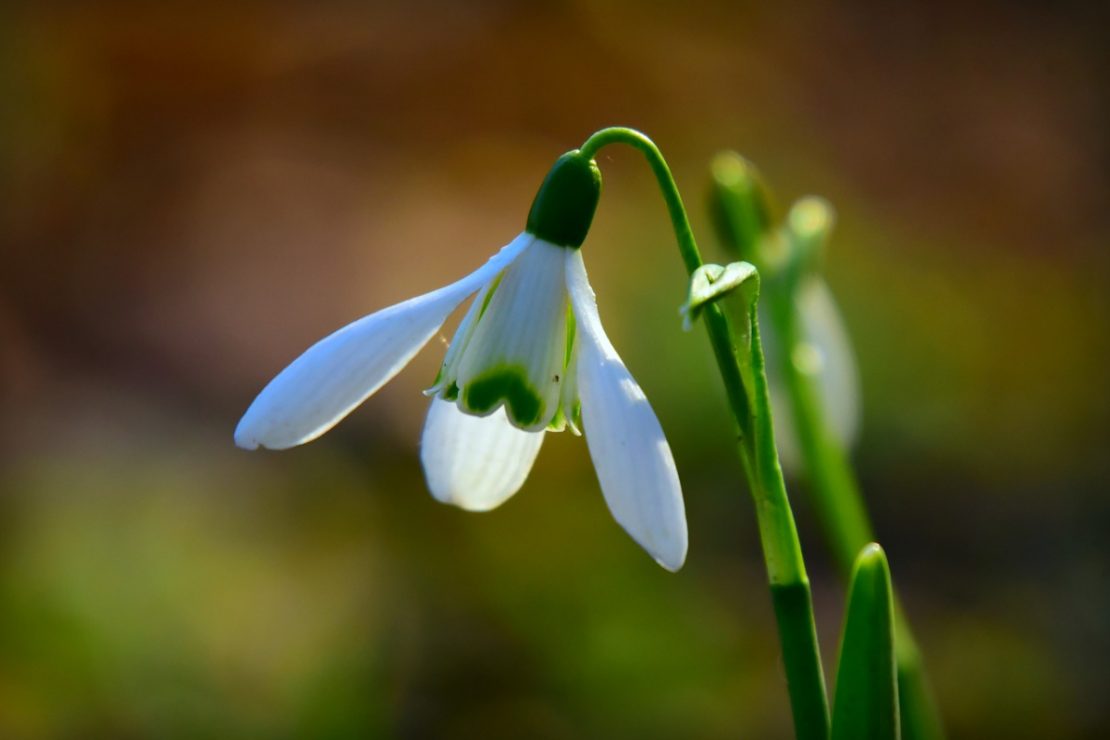
The Herbs That Got Away: Rediscovering Silphium and Other Missing Historical Plants
With a landscape brightened by vivid colors and infused with aromatic scents of ocean and mountains, the ancient Mediterranean region provided a sensational feast for the senses. Many of the historical plants that the various ancient civilizations in this region gathered for food, medicine, and religion remain in use today. Yet, the story of some of these historical plants, for various reasons, ended too soon. Due to extinction or botanical mysteries, there are several historical plants that we can no longer include in our collective materia medica. These historical plants include silphium (Silphion Gr.), moly, and plany plant, known by the ancient civilizations of Greece, Rome, and Egypt. By exploring the uses of these three plants in antiquity, we can honor their memory and their once-celebrated gifts.
The Lure of Silphium
“You ask, my Lesbia, how many of your kisses are enough and more than enough for me. As big a number as the Libyan grains of sand that lie at silphium-producing Cyrene…” – Gaius Valerius Catullus (84-54 BCE), Carmen 7
Silphium (Silphion Gr.), thought to be extinct, was a highly treasured medicinal plant throughout the ancient Mediterranean region. This wonder herb reportedly grew only wild and was found abundantly in Cyrene, an ancient Greek city spanning parts of modern-day Libya and northern Africa. The ancient Greeks populated the city for six centuries, spanning three major periods of Greek history−Archaic, Classical, and Hellenistic, from 631 BCE until 96 BCE. During the following two centuries, the ancient Roman empire expanded and ruled the area. Both cultures left an indelible mark on the region’s history; sacred temples honoring mythological gods can still be visited today. During this long stretch of time, marked by shifts in literacy, medicine, and art, the economy in Cyrene prospered due to the increasingly popular silphium plant; proof is found in ancient silver coins that bear the plant’s image. Because of its limited geographic distribution, the plant was extremely expensive−harvested and shipped at great cost across land and sea−and yet remained popular and highly sought after among many love-thirsty people.
In ancient Greece, silphium was revered as a gift from Apollo, the Greek god of healing, music, and the sun. The early Minoan civilization on Crete and the ancient Egyptians had a special glyph, or unique symbol, that represented silphium (Hogan, 2007). The ancient Egyptians used the plant’s gum-resin to secure bandages around the deceased during the mummification process. The ancient Romans valued silphium’s weight in silver coins and Julius Caesar (100-44 BCE) supposedly kept 1,500 pounds of the plant’s resin in the Roman treasury. His heir and great-nephew emperor Caesar Augustus (63 BCE – 14 CE) would later mandate that all stocks of silphium be sent to Rome (Zong, 2018). Silphium was sung about in love songs and poems, including those by Catullus (84-54 BCE), the famed Latin poet who influenced the works of Virgil (70-19 BCE) and Ovid (43 BCE – 18 CE). His poem Carmen 7 (above) references “silphium-producing Cyrene” amid his attempt to describe the vastness of his adoration for his lover (Catullus, ca. 44 BCE/2004).
Silphium’s widespread lure was primarily due to its aphrodisiac, oral contraceptive, and abortifacient properties. The plant’s resin, called laser, laserpicium, or lasarpicium, “may have been the ancient world’s most effective antifertility drug” (Riddle & Estes, 1992, p. 226). This widespread use reflected both a love-crazed population and the subsequent need for population control, particularly among the ancient Greeks, whose biggest proponents of population control were statesmen and philosophers, including Plato and Aristotle, intent on managing both limited natural resources and the safety of the populace (Holzwarth, 2020). Many ancient writers, including Aristotle (384-322 BCE), Theophrastus (c. 370 – c. 287 BCE), Pliny the Elder (23-79 CE), Dioscorides (40-90 CE), and Galen (129-210 CE), discuss the merits of silphium in their surviving texts, spanning centuries. In the Hippocratic Corpus, a collection of texts related to the teachings of Hippocrates (460-370 BCE), silphium was an ingredient in a recipe to expel a stillbirth (Totelin, 2015). In ancient Rome, the recommended dosage was an amount comparable to the size of a chick-pea taken in two glasses of water taken monthly to provoke menstruation, prevent conception, and dissolve any already existing implantation (Soranus, of Ephesus, ca. 120/1991).
In addition to antifertility applications, silphium was considered a “cure-all” for a variety of health matters (Richardson, 1999). It was popular for easing digestive ailments, as a topical muscle and wound salve, and for headaches, cough, and sore throat. Hippocrates recommended it as a purgative, febrifuge, and poultice, and the plant was noted to have a similar windy effect like garlic, in that its aroma could travel out from the body. Riddle and Estes (1992) suggest that there may have been other applications, but because of “the hidden nature of female culture”(p. 226) in antiquity, we cannot know more about the plant nor about women’s experiences with it, such as how to prepare the herb, the optimal dose, and best time to take it during their menstrual cycle. Theophrastus provides a hint of how the resin, or “juice,” was harvested: “They have regulations…for cutting the root, in accordance with which they fix carefully the proper amount to be cut, having regard to previous cuttings and the supply of plant. For it is not allowed to cut it wrong nor to cut more than the appointed amount; for, if the juice is kept and not used, it goes bad and decays” (Hort, 2019, 3.2-3.4).
Silphium was also a favored ingredient in cuisine. Its leaves and stalk, chopped or grated, were added to many dishes. According to Dioscorides, it “tastes good mixed with sauces and salt” (Dioscorides, Osbaldeston, & Wood, 2000, p. 475, 479), and its leaves can be eaten as a salad with lettuce. The celebrated Roman cookbook De Re Coquinaria of Apicius included an oxygarum sauce recipe with ½ oz. pepper, 3 scruples silphium, 6 scruples cardamom, 6 scruples cumin, and 6 scruples of mint (a scruple was equal to approximately 1.5 grams). The ingredients are crushed and mixed with honey to form a paste, and “when this work is done or whenever you desire, add broth and vinegar to taste” (Hill, 1936, p. 57). Silphium was so well-known and enjoyed that Aristophanes (446-386 BCE), the Greek comedic playwright, jokingly demands in his play, Birds: “Hand me the grater, bring the silphium you, now then, the cheese” (Rogers, 1924, p. 275).
There are more uses of silphium, including as an ingredient in perfumes, but as Pliny the Elder (23-79 CE) said, listing the uses of silphium would be “an endless task to record” (Pliny the Elder, 77/1952, p. 369).
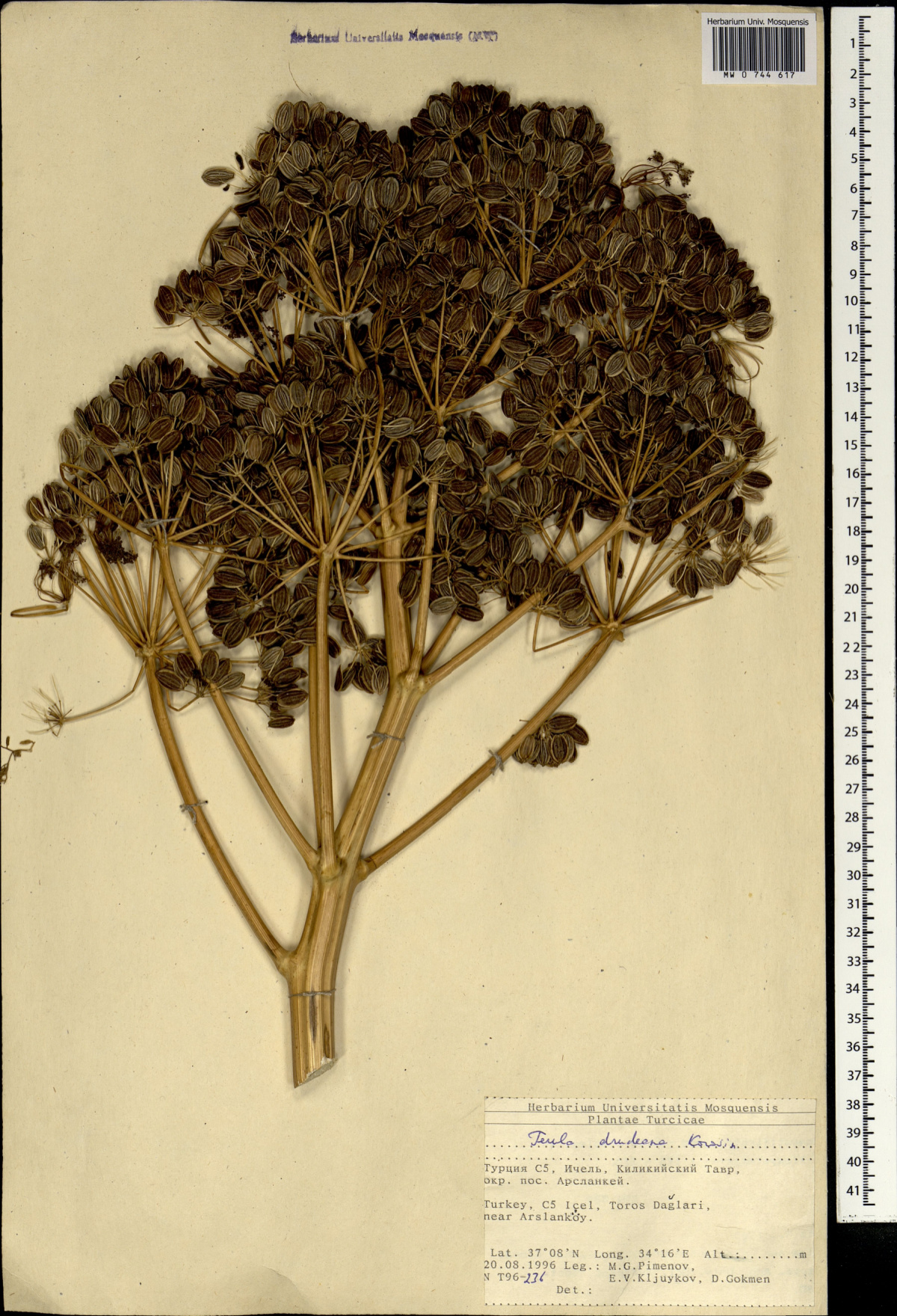
“Ferula drudeana Korov. (Ферула Друде), Moscow University Herbarium” – Ferula drudeana Korovin collected in Turkey by Moscow State University (copyright is managed by Dr. Alexey P. Seregin) (licensed under http://creativecommons.org/licenses/by/4.0/)
The Botany of Silphium
Silphium is believed to have been a type of giant fennel in the genus Ferula and in the family Apiaceae, shared by carrot, celery, and parsley. Theophrastus describes silphium as having thick roots covered in black bark with a hollow stalk, similar to fennel, and golden leaves, like celery (Hort, 2019). The most valuable part of the plant was the collected resin of the stalk and root, the source of antiquity’s aphrodisiac and antifertility drug. Why silphium grew only in Cyrene may be due to the region’s rich, fertile soil or for other reasons unclear. In an insightful recently completed study by Mahmut Miski (2021), a rare and endemic species of Ferula growing near Central Anatolia was identified as a possible match to silphium. The plant, F. drudeana, exhibited similar botanical and biological activities with its ancient ancestor, more so than any other Ferula species previously studied. The study also made promising headway to explain its possible extinction: slow growth to maturity and a short life span. Silphium was likely a monocarpic plant, meaning that the plant flowers, seeds, and then dies.
In historical plants of the same genus, the substance ferujol has been identified and early studies have indicated its effectiveness in preventing pregnancies (Kolata, 1994; Riddle & Estes, 1992). Silphium’s composition has also been compared to other abortifacients used in antiquity, including wormwood (Artemisia absinthium), Queen Anne’s lace (Daucus catora L.), and pennyroyal (Mentha pulegium L.) (Riddle & Estes, 1992). Perhaps not surprisingly given its association with sex, the seeds of the silphium plant were heart-shaped, as depicted in ancient images. This may have been the origin of how we came to associate the shape of the heart with romance. Botanically, the fruit of silphium was likely schizocarp; when mature, the fruit splits into what is called a mericarp, a carpel with one seed. While carefully examining overlapping mericarps in F. drudeana, the author confirmed the shape of our beloved heart symbol.
The End of Silphium?
“Within the memory of the present generation, a single stalk is all that has ever been found there, and that was sent as a curiosity to the Emperor Nero.” – Pliny the Elder (23-79 CE), Natural History 19.15 (ca. 77/1950)
Since before medieval times, scholars from all over Europe have attempted to solve the mysterious disappearance of silphium (Keller, 2014). They have offered several theories for its extinction based on ancient commentary and modern scholarship: overgrazing by livestock (as suggested by Pliny the Elder), overharvesting to meet high demands, desertification of the soil, destruction from an earthquake, or human destruction from revolt (Gemmill, 1966). In antiquity, there had been multiple attempts made by farmers in Greece and Syria to cultivate the plant for easier and more affordable access, but the plant would not prosper anywhere but Cyrene (Potter, 2012; Riddle & Estes, 1992).
During and after its demise, a substitute plant, asafoetida (Ferula asafoetida L.), became widely used in its place, with similar herbal applications as silphium. Asafoetida was listed in the U.S. pharmacopeia in 1916 and medical uses have been cited by physicians in Egypt, India, and China in the modern age (Gemmill, 1966). Like silphium, asafoetida belongs to the Apiacea family, but according to Dioscorides, it was “weaker in strength” and had “a more poisonous smell” (Dioscorides, Osbaldeston, & Wood, 2000, p. 475). As silphium’s substitute, it was most often used in culinary recipes and not as an effective love-drug. Asafoetida continues to be a common ingredient in many Indian recipes and as an alternative ingredient for onion and garlic. It is unfortunate that silphium, hailed as “one of the most precious gifts of nature” (Pliny, 77/1950, p. 179), has been missing for more than 2,000 years. There are, however, promising results from Miski’s recent study of F. drudeana. Perhaps there is still hope for its green resurgence.
Other Missing Historical Plants
While extinction is one reason that we may have lost prized historical plants, another reason is the difficulty in correctly identifying plants written about in antiquity. Even today, there are herbs from the ancient world, including the mythological world, that we have yet to identify with absolute certainty.
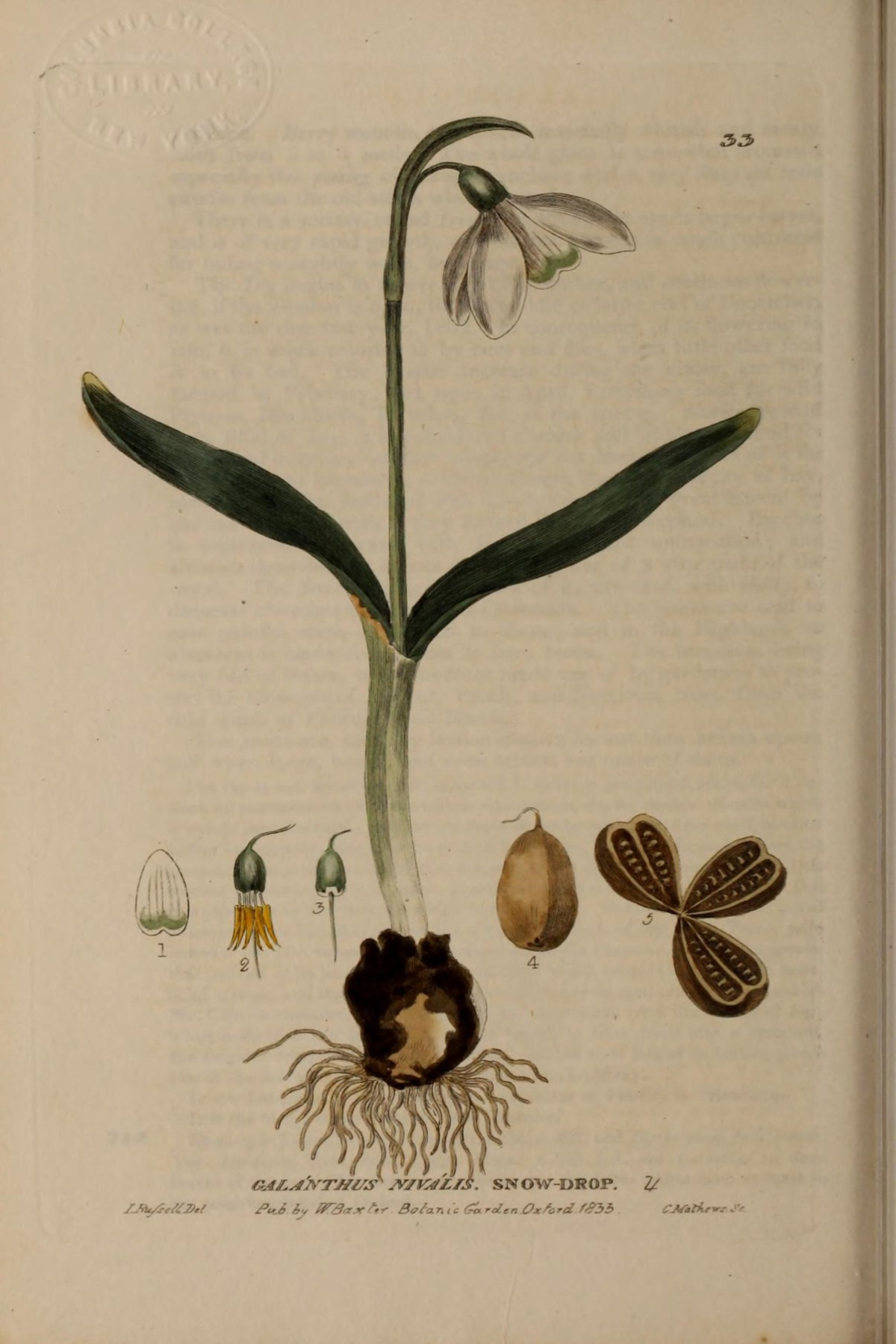
Moly
In the epic poem The Odyssey, written by Homer in the 8th or 7th century BCE, the sorceress Circe uses a special drug or pharmakon to transform a group of men into swine. To escape the same fate, Odysseus is given the plant moly from Hermes, the messenger of the Greek gods. Moly was considered an herbal antidote against Circe’s witchcraft, and in the story, it gives Odysseus the protection he needs.
In antiquity, moly was often described with mystical qualities: “The root was black, while the flower was as white as milk; the gods call it Moly, and mortal men cannot uproot it, but the gods can do whatever they like” (Homer, ca. 750 BCE/1900, 10.302). In his herbal textbook De Materia Medica, Dioscorides recommends the herb “(cut up by the root and carried around the body) is good against poisoning and bewitching.” Botanically, the plant had “flowers similar to white violets, a milky colour” and “a white stalk of four feet, on the top of which stands something similar to garlic” with a root in “the shape of a scallion” (Dioscorides, Osbaldeston, & Wood, 2000, p. 428).
Scholars have attempted to identify historical plants based on the descriptions in these literary and herbal texts. Early scholars had suggested that the plant was a type of Allium species, a wild garlic (Stannard, 1962). But many modern scientists suggest that this ‘holy moly’ was snowdrop (Galanthus nivalis L.), which is native to the Mediterranean. Snowdrop contains galantamine alkaloid, a phytochemical that acts as an antidote to chemicals that induce a delusional state. Today, galantamine is the treatment for anticholinergic poisoning from tropane alkaloids and for Alzheimer’s disease (Plaitakis & Duvoisin, 1983; Tesseromatis, 2020). The word ‘moly’ is traced to the ancient Greek word μωλύω, meaning “to relax,” perhaps in reference to its actions on the nervous system (Tesseromatis, 2020).
While our historical sources remain muted, we can certainly modify the fantastical tales of ancient Greece to our modern needs for medicine.
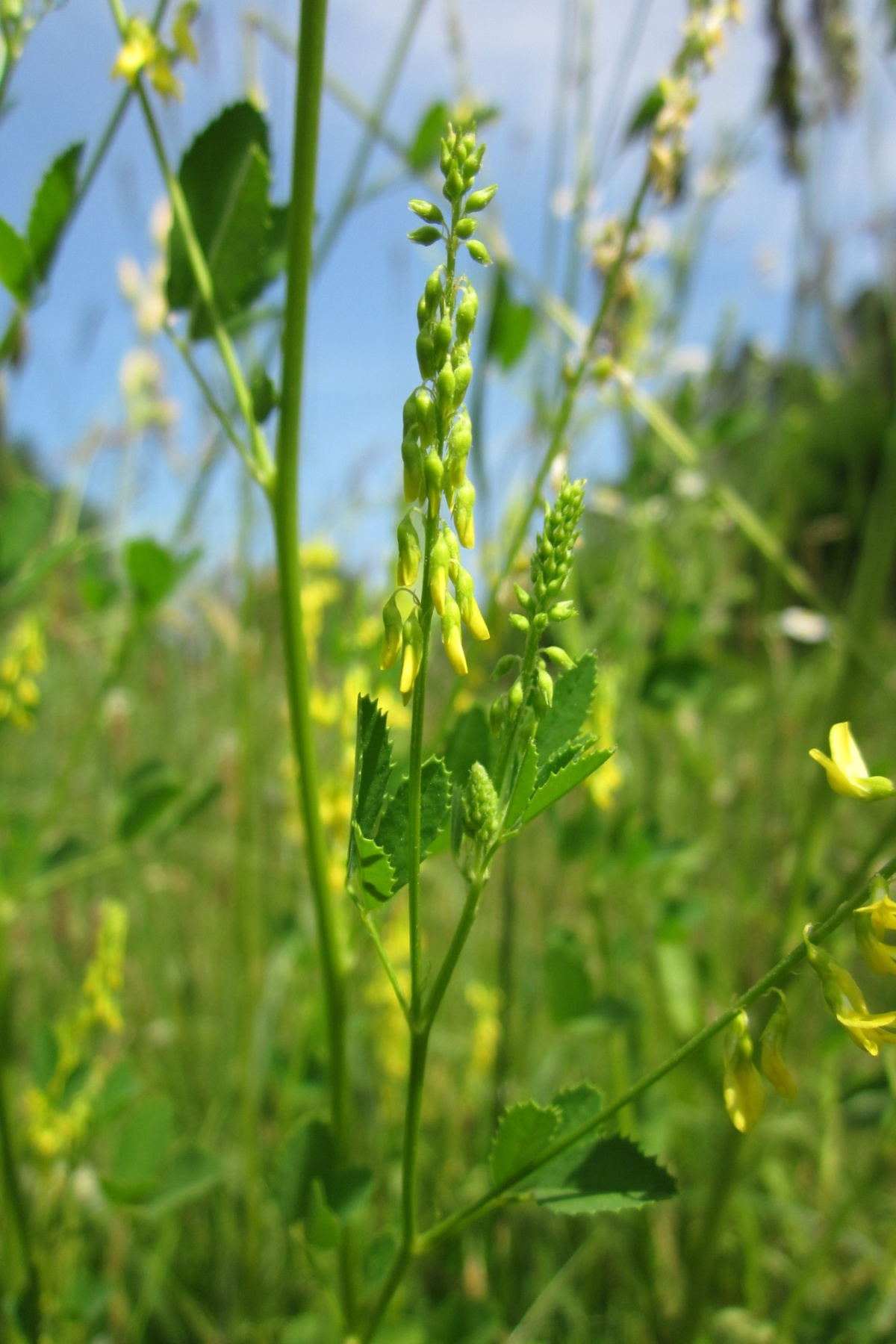
Yellow Sweet Clover (Melilot officinalis)
Plany Plant
Called psalakantha in ancient Greek, the plany plant was featured in the myth of Psalakantha, a nymph on the Aegean island of Ikaria. Dionysus, the Greek god of wine and celebration, had fallen in love with her friend Ariadne and sought Psalakantha’s help in wooing her. Psalakantha, however, was in love with the god herself, and agreed to help him only if he fulfilled her desires. But Dionysus refused, and in his anger at Psalakantha’s refusal to help him, he transformed her into the plany plant. The theme of a female character turned into a plant is common in Greek myth and demonstrates the grand imagination of the ancient Greeks to personify nature and attribute meaning to many native species. Subsequently, the plany plant was woven into garlands and worn at festivals sacred to Dionysus. The ancient Egyptians also attributed meaning to the plant; they wove the garlands to decorate their horses in hopes of health and victory (Atsma, 2017).
Botanically, the plany plant was described as an herbaceous perennial with silvery green leaves and pale-yellow flowers. In ancient texts, it was compared to absinth wormwood (Artemisia absinthium) and yellow sweet clover (Melilot officinalis). Unfortunately, there are not many descriptions of the plant in many ancient texts, making it difficult for scholars to accurately identify it today.
In Closing,
It is nothing short of miraculous that nature continues to provide us with her abundance of beauty and sustenance after so many years of life on this planet. By exploring the evidence of historical plants like silphium, moly, and plany plant, we can keep alive the memories of our missing plant allies. It is these historical plants that can remind us of our herbal inheritance, the significance of traditions, and the earth’s gifts to herbalists then and now.
For more posts on historical plants and ancient herbal wisdom, see:
De Materia Medica: The Ancient Text That Changed the World
Botany Beginnings: Who Was Theophrastus
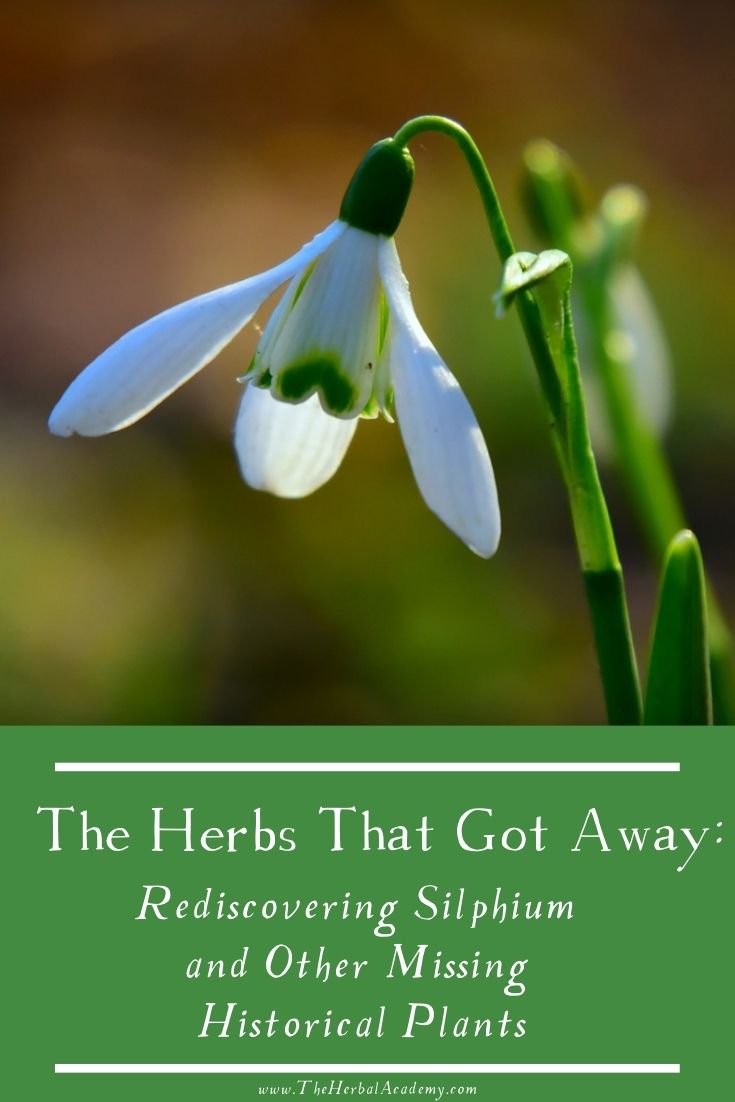
REFERENCES
Atsma, A. (2017). Psalakantha. Retrieved from https://www.theoi.com/Nymphe/NymphePsalakantha.html
Catullus, G. (2004). Carmen 7. (D. San, Trans.) (Original work published ca. 44 BCE). Retrieved from http://rudy.negenborn.net/catullus/text2/e7.htm
Dioscorides, P., Osbaldeston, T. A., & Wood, R. P. (2000). De materia medica: Being an herbal with many other medicinal materials: written in Greek in the first century of the common era: a new indexed version in modern English. Johannesburg, South Africa: IBIDIS.
Gemmill, C. (1966). Silphium. Bulletin of the History of Medicine, 40(4), 295-313. Retrieved from http://www.jstor.org/stable/44447186
Hill, W. (1936). De re coquinaria of Apicius. Retrieved from https://penelope.uchicago.edu/Thayer/E/Roman/Texts/Apicius/6*.html#IX
Hogan, C. (2007). Knossos fieldnotes. Retrieved from https://www.themodernantiquarian.com/site.php/10854/knossos.html#fieldnotes
Holzwarth, L. (2020). Population control was no joke in ancient Greece and the Roman Empire. Retrieved from https://historycollection.com/population-control-was-no-joke-in-ancient-greece-and-the-roman-empire/23/
Homer. (1900). The odyssey. (S. Butler, Trans.). London: A. C. Fifield. (Original work published ca. 750 BCE).
Hort, A.F. (2019). Theophrastus, enquiry into plants: Collected works of Theophrastus. East Sussex, United Kingdom: Delphi Publishing.
Keller, V. (2014). Nero and the last stalk of silphion: Collecting extinct nature in early modern Europe. Early Science and Medicine, 19(5), 424-447.http://www.jstor.org/stable/24269398
Kolata, G. (1994). In ancient times, flowers and fennel for flower planning. Retrieved from https://www.nytimes.com/1994/03/08/science/in-ancient-times-flowers-and-fennel-for-family-planning.html
Miski, M. (2021). Next chapter in the legend of silphion: Preliminary morphological, chemical, biological and pharmacological evaluations, initial conservation studies, and reassessment of the regional extinction event. Plants. 10(1):102. https://doi.org/10.3390/plants10010102
Plaitakis, A. & Duvoisin R.C. (1983). Homer’s moly identified as Galanthus nivalis L.: physiologic antidote to stramonium poisoning. Clinical Neuropharmacology, 6(1):1-5. https://doi.org/10.1097/00002826-198303000-00001
Pliny the Elder. (1950). Natural history. (H. Rackham, W.H.S. Jones, and D. Eichholz, Trans.). Cambridge: Harvard University Press. (Original work published 77 CE).
Potter, P. (2012). Hippocrates V and VI. Cambridge, MA: Harvard University Press.
Richardson, S. (1999). Libya domestia: Libyan trade and society on the eve of the invasions of Egypt. Journal of the American Research Center in Egypt, 36, 149–164.https://doi.org/10.2307/40000208
Riddle, J., & Estes, J. (1992). Oral contraceptives in ancient and medieval times. American Scientist, 80(3), 226-233. Retrieved from http://www.jstor.org/stable/29774642
Rogers, B. (1924). Aristophanes with the English translation of Benjamin Bickley Rogers. London, United Kingdom: William Heinemann.
Soranus, of Ephesus. (1991). Soranus’ gynecology. (O. Temkin, Trans.). Baltimore: Johns Hopkins University Press. (Original work published ca. 120 CE).
Stannard, J. (1962). The plant called moly. Osiris, 14, 254-307. Retrieved from http://www.jstor.org/stable/301871
Tesseromatis, C. (2020). Drugs in Greek mythology and medicine. Journal of Medicinal Plant Studies, 8(2): 38-43.
Totelin L. (2015). When foods become remedies in ancient Greece: The curious case of garlic and other substances. Journal of ethnopharmacology, 167, 30–37. https://doi.org/10.1016/j.jep.2014.08.018
Zong, F. (2018). The mystery of Pliny’s silphium. Retrieved from https://storiesfromthemuseumfloor.wordpress.com/2018/10/05/the-mystery-of-plinys-silphium/







